I could not solve the problem of kitchen apron for a very long time.
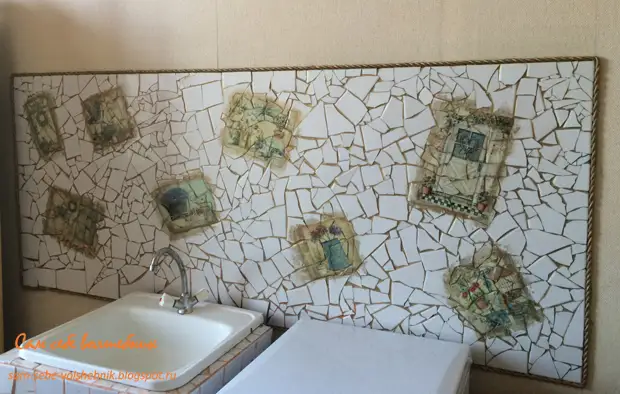
My desire to arrange the entire Kitchen in the style of Provence dispelled with all the options that could offer me searching on the Internet.
I wanted to see something like a rare in the form of an old stone with green bronze streaks and at the same time very much I really wanted to shake the pictures of old and good provence.
The decision came completely unexpectedly. The old box that came to my eyes on the Internet, all in the cracks that the old drawings existing on it were cut, brought me finally on the idea that I needed, and how to get it. However, everything is in order.
On the wall of my not yet renovated bathroom, there was such an imperious old white tile, which I broke from the wall with a hundred and hammer.
The tile of course split into pieces with this procedure, but it was exactly what I needed.
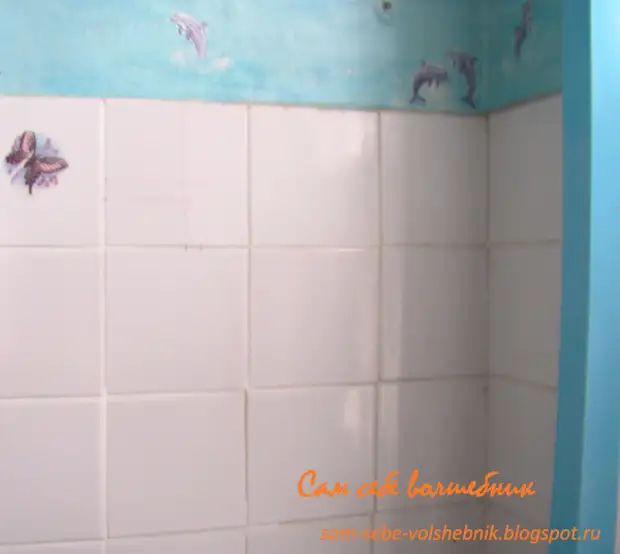
Then I began to glue the resulting fragments of tiles on the wall where I expected to have apron in the kitchen.
Adhesive on COP glue. It is just amazing glue. He is sufficiently thick, and it is only worth pressing a piece of tiles to the wall smeared to them, which was covered with plasterboard, and hold 5-10 seconds in this position, as the tile tightly grabbed the wall.
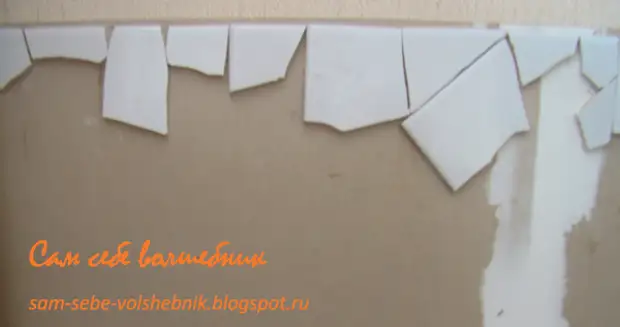
So I stuck with pieces of the tile all the space of my future apron.
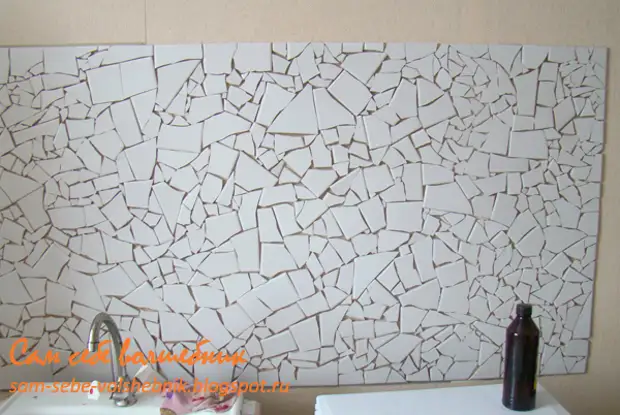
Then I found on the Internet and brought the Provence style pictures on the usual inkjet printer and prepared them for decoupage. How can I use the pictures derived from the Internet for decoupage I have already written here.
Make a decoupage of pictures on PVA glue I could not succeed, because The uneven surface of the tile bat did not give the opportunity to smooth out pictures, the paper wedge from glue, and the pictures simply rushed. I came out of the situation as follows.
I glued pictures on the yacht varnish. It does not contain water, and the pictures do not rush.
When the lacquer is dry, I cut the pictures with a sharp knife on all cracks, which formed slices under them.
Then I covered the pictures themselves also twice with a yacht varnish. This lacquer gives the yellowness and the pictures of steel and in appearance, and to touch the impression of the old bat of the artistic tile.
I do not know if the photos were able to convey this effect, but in reality he surpassed all my expectations and turned out simply great.
At the edges, I "stuck" pictures with a sponge dipped in a bronze acrylic paint.
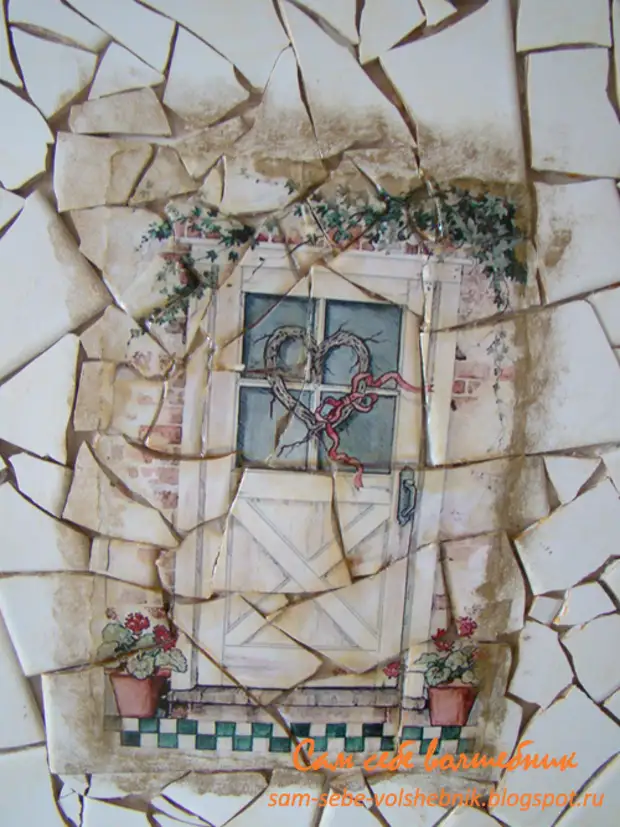
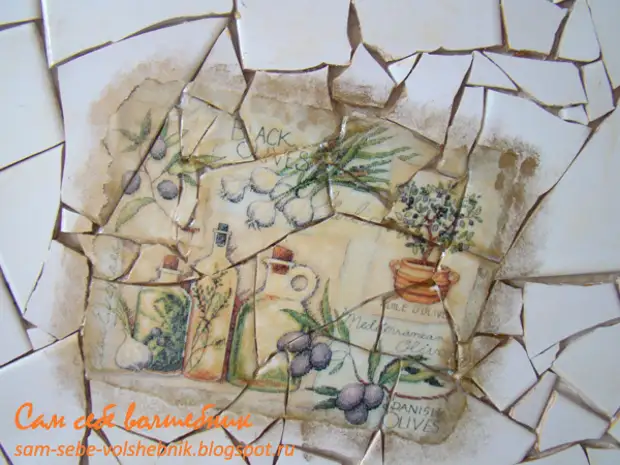
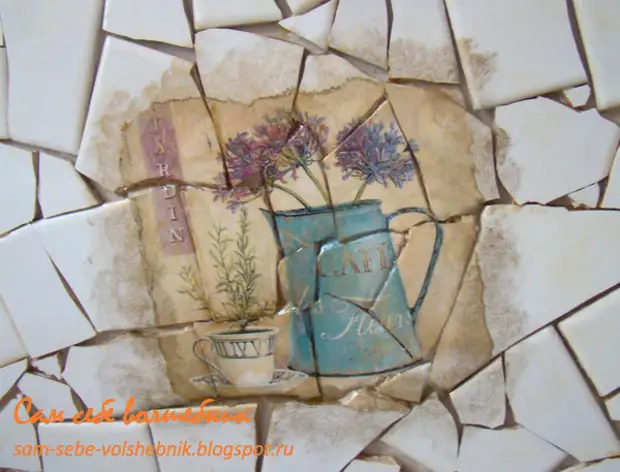
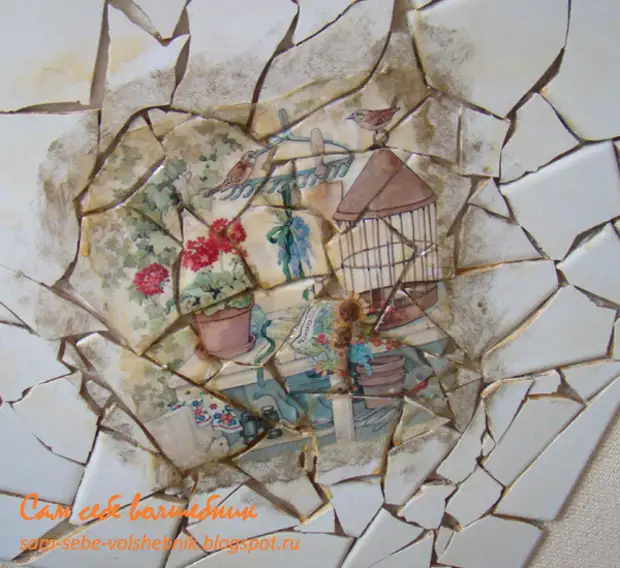
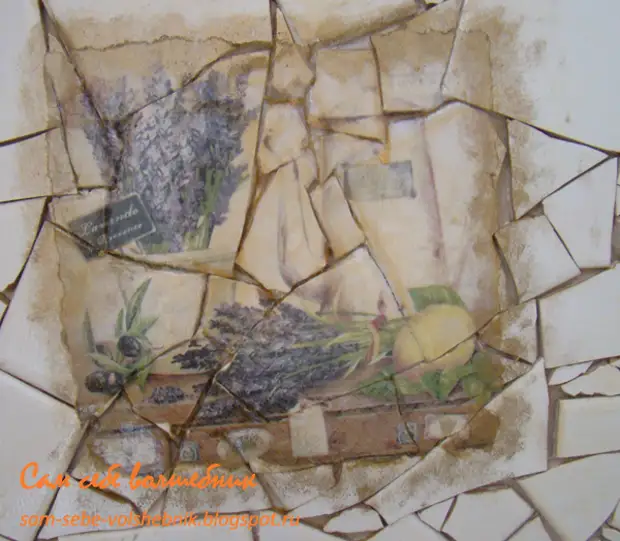
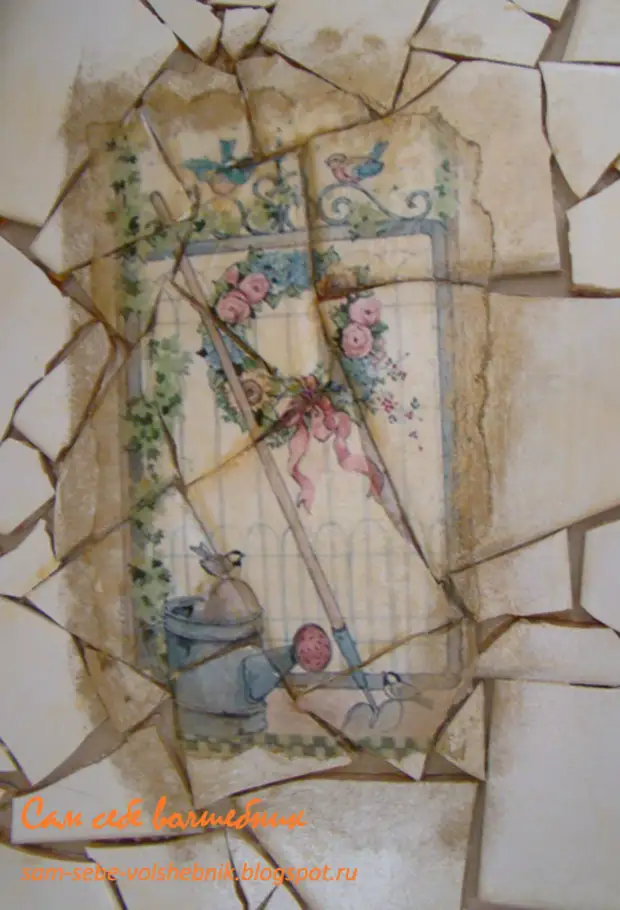
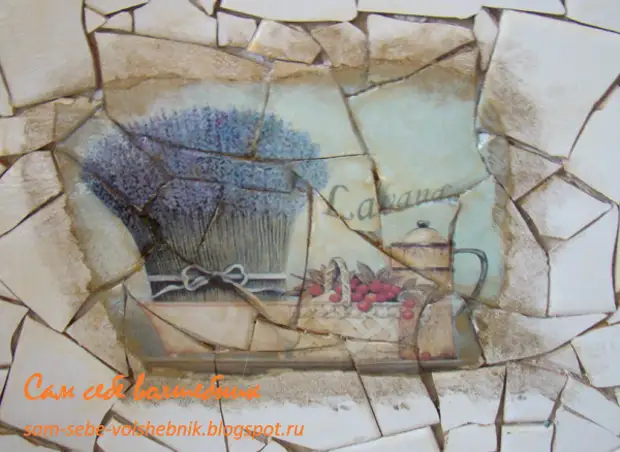
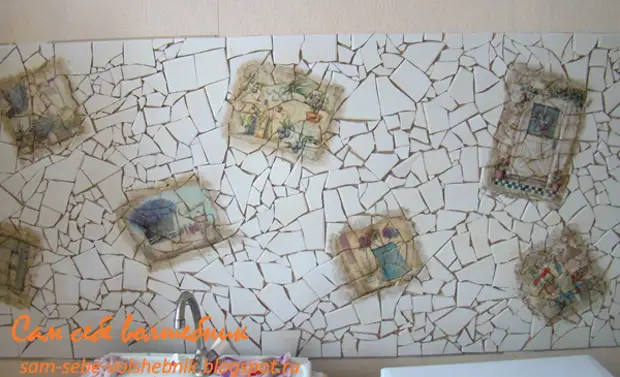
Further, I touched the putty with a turquoise kel and smeared all the gaps between the tile pieces. Why I chose this color, I will explain a little later. I did it according to the technology described on the packaging of putty.
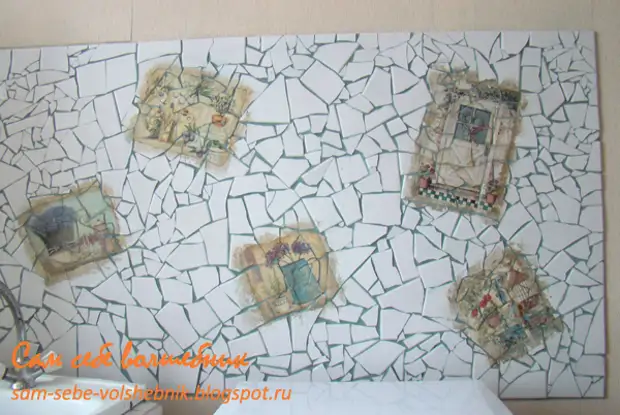
Then the challenge began to somehow arrange apron at the edges. I went over different options and stopped on a thin gold-plated stroke, which performed as follows.
I bought in the shopping store Kronovy Fal. This is a rope that looks like a clothesline, only in the core he has a hard pouring rod.
The Fala structure is such that when I began to twist it in the form of a twisted cord, it was not spinning as well as remained in this form.
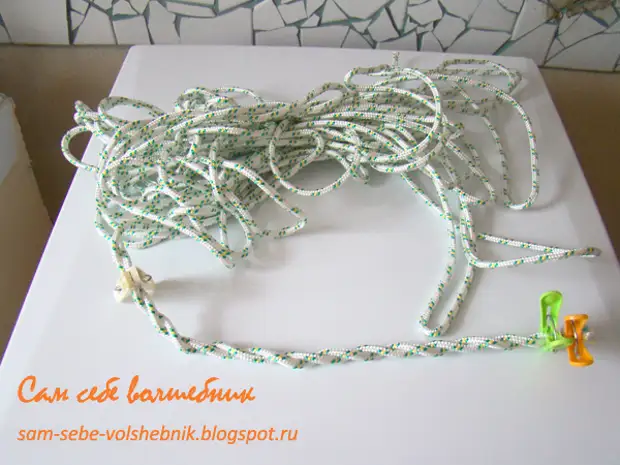
Next, I have become small areas to glue this cord along the edge of the apron. I glued on PVA super glue. The glued sections I pressed for the density of conventional sewing pins, if possible, rampartively pouring them to wallpaper.
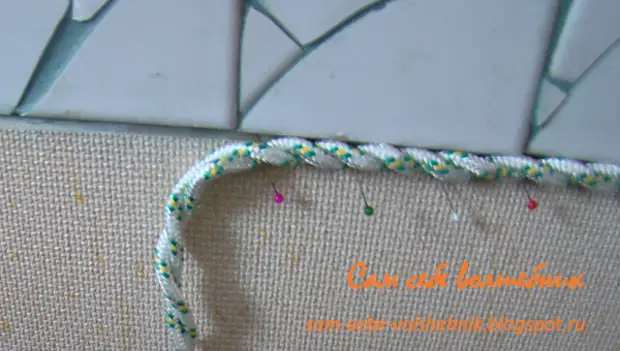
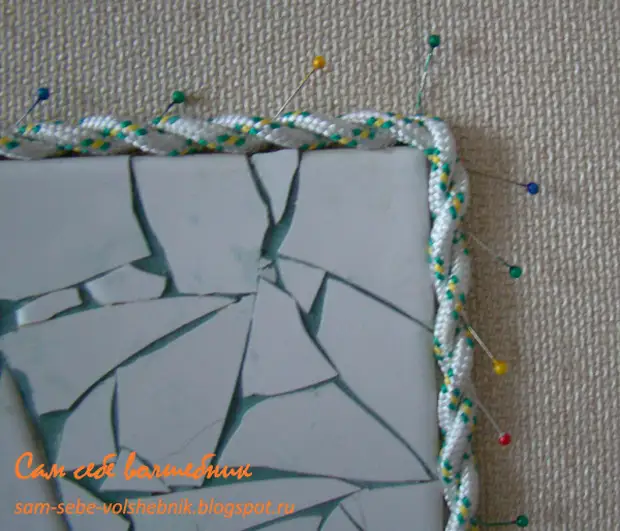
Literally after half an hour, the cord looked "grabbed" with a wall along the edges of the apron.
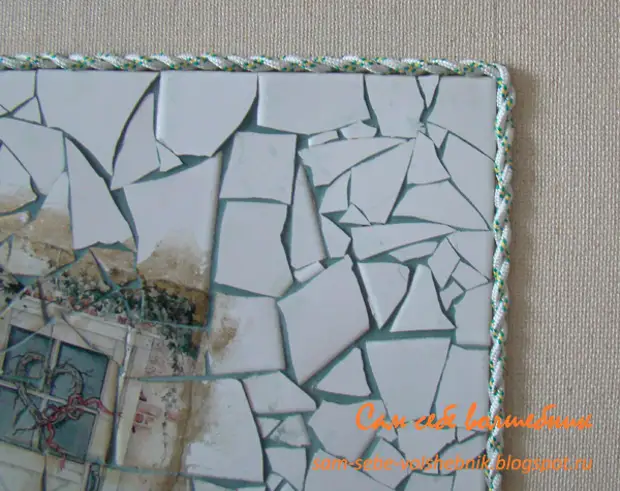
Next, I glued the painter tape on both sides of the cord and painted it twice the bronze paint and at one time from above - gold.
The gaps between the pieces of the tile I also trusted the bronze paint.
Now, every time after washing the paint, it will be gradually go and leave in these places greenish-turquoise choppers, which will resemble the bronze from time to time.
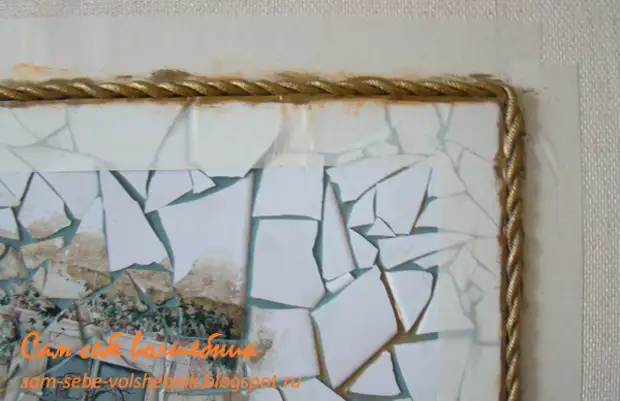
That's it. My apron is ready.
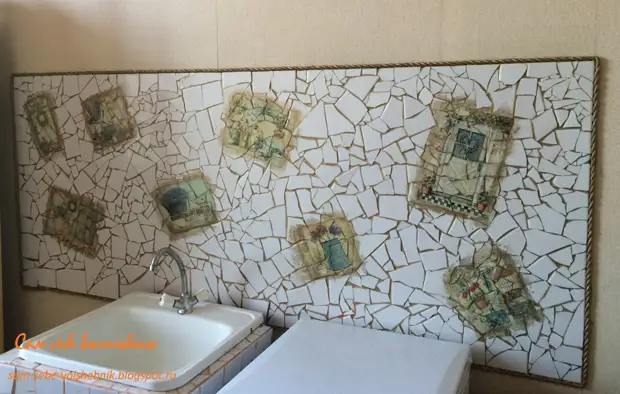
Since I used the old tile, I could not be perfectly cleaning its base from the old glue. This affected the fact that the pieces did not go perfectly smoothly, but this is exactly the effect that I achieved: the effect of manual not professional tile laying, as it was in old Provencal settlements.
The tile can be painted in any color and coat with varnish. However, I decided to leave white color. The very first ceramic tile was exactly white, and it seems to me a certain vintage.
A source
